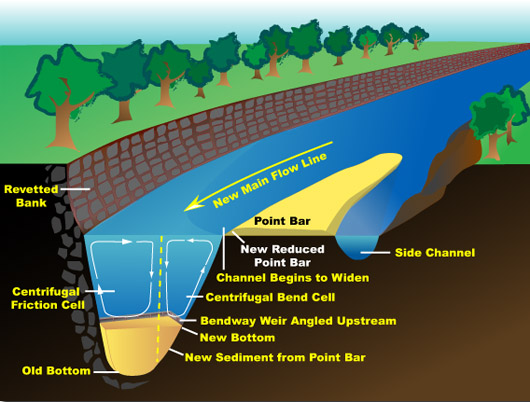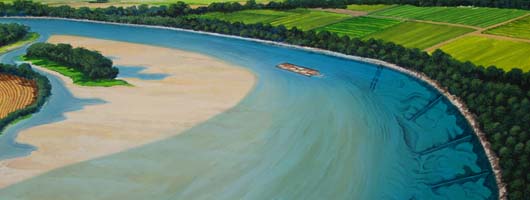
Bendway Weirs
Bendway Weirs are actually low level rock dikes angled upstream to the flow and submerged at all times. Towboats navigate over the tops of the weirs at all river conditions. The structures cause a widening of the navigation channel; mainly in bends or turns, by creating a favorable redistribution of velocities and sediments that are verified in model tests and observations after they are installed. Since the first weirs were constructed in 1989 it has been well documented that they have eliminated the need for dredging in the bends and have dramatically reduced the number of accidents.
The Concept
The Bendway Weir is a low level, totally submerged rock structure that is positioned from the outside bankline of the riverbend, angled upstream toward the flow. These underwater structures extend directly into the navigation channel underneath passing tows. Their unique position and alignment alter the river's secondary currents in a manner which controls excessive channel deepening and reduces adjacent riverbank erosion on the outside bendway. Because excessive river depths are controlled, the opposite side of the riverbank is widened naturally. This results in a wider and safer navigation channel through the bend without the need for periodic maintenance dredging.
Un-revetted Bend Section
In the un-revetted river bend, currents resulting from the spiraling centrifugal force action of water flowing around the bend circulate outward from the main flow line of the river. This action picks up sediment and deposits it on the inside of the bend, and erodes the outside bankline. This process causes the river to change it's course (Meander).
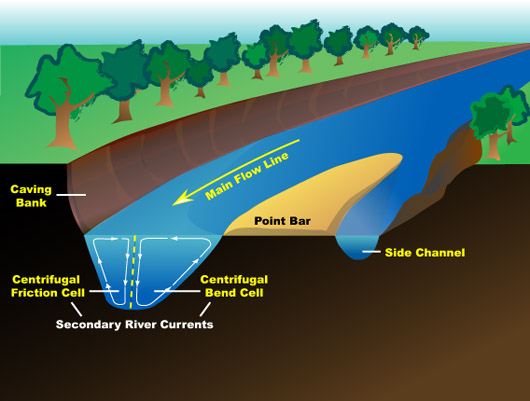
Revetted Bend Section
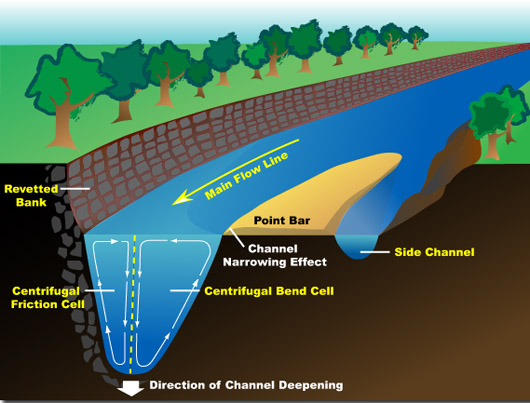
Bendway Weirs Forces
Totally Submerged rock weirs are placed on the bottom of the river angled 30 degrees upstream to the river flow. These Structures are directly beneath the navigation channel, but at a depth that allows barge traffic to pass over the structures unimpeded even during low water conditions.
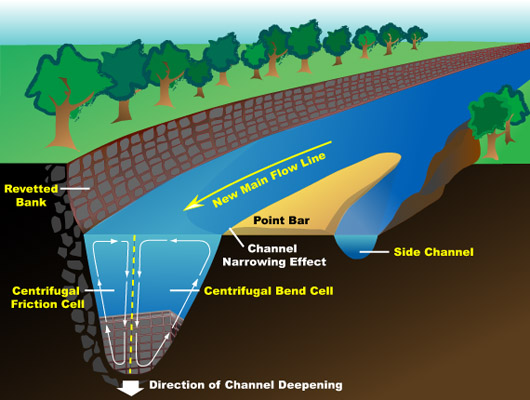
Bendway Weirs Redirect Currents
With the installation of Bendway Weirs, the secondary currents are redirected. Sediment is deposited between the Bendway Weirs beneath the passing tows rather than building up as a point bar on the inside of the bend. The channel remains shallow and wider than if just revetted along the outer bank.
